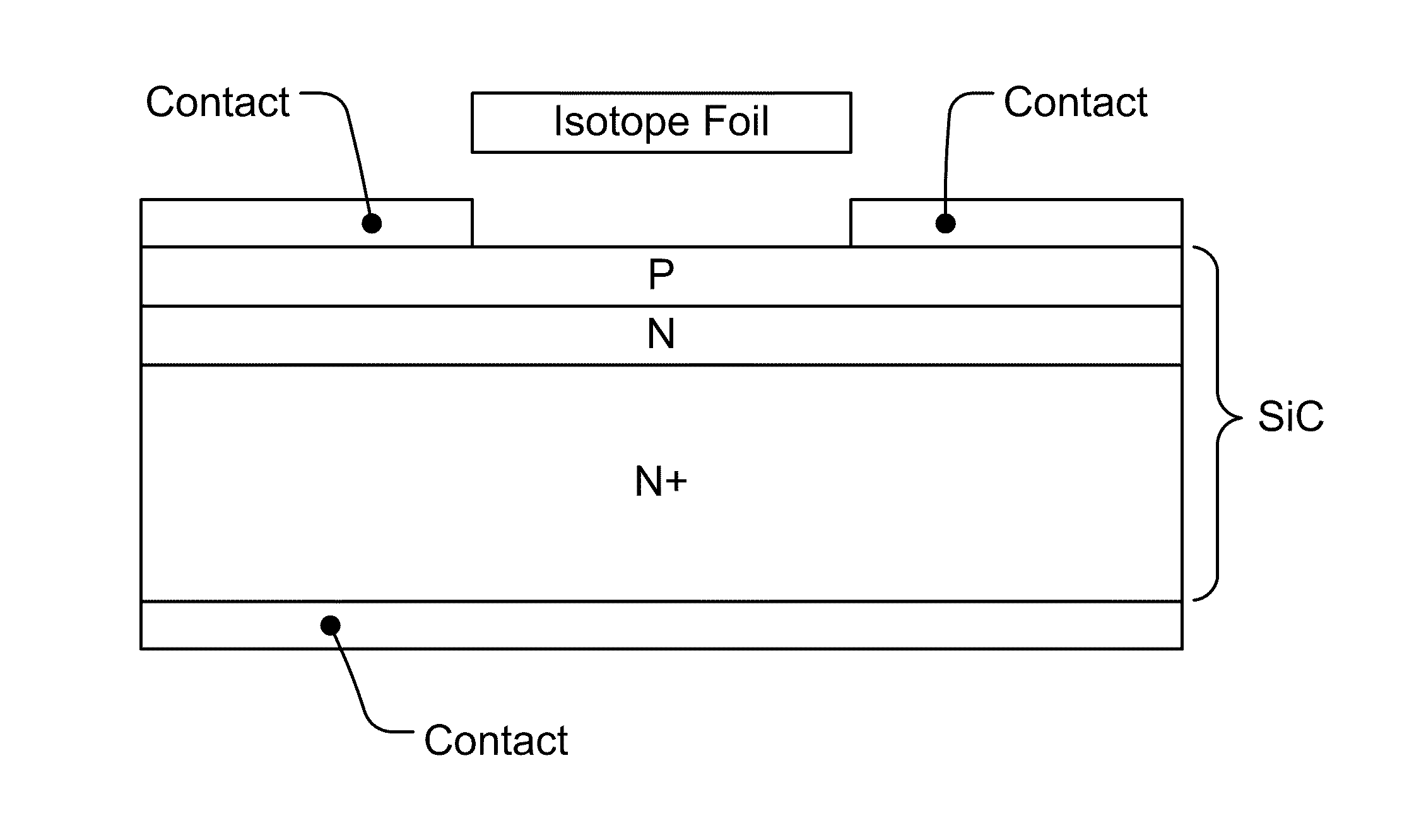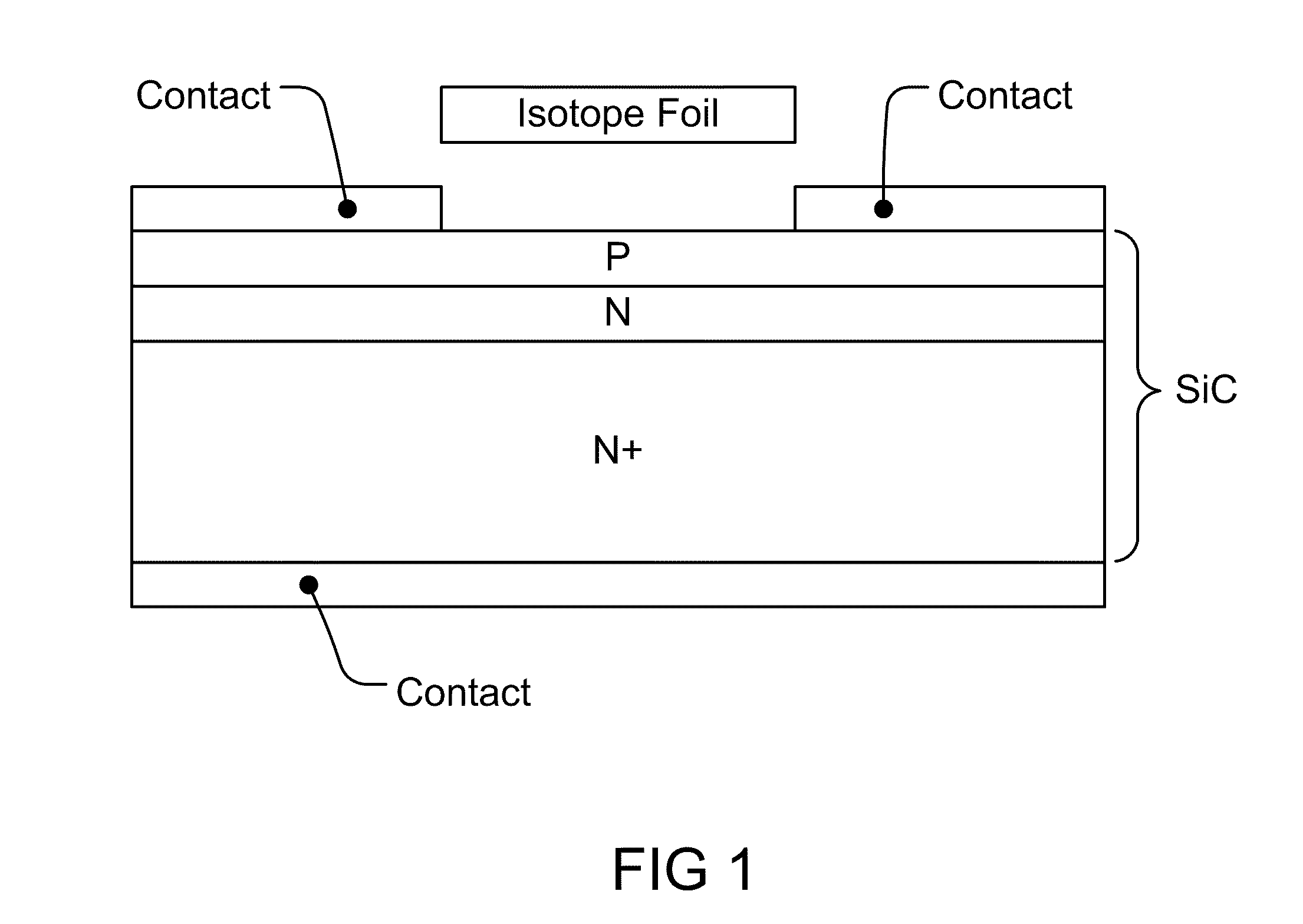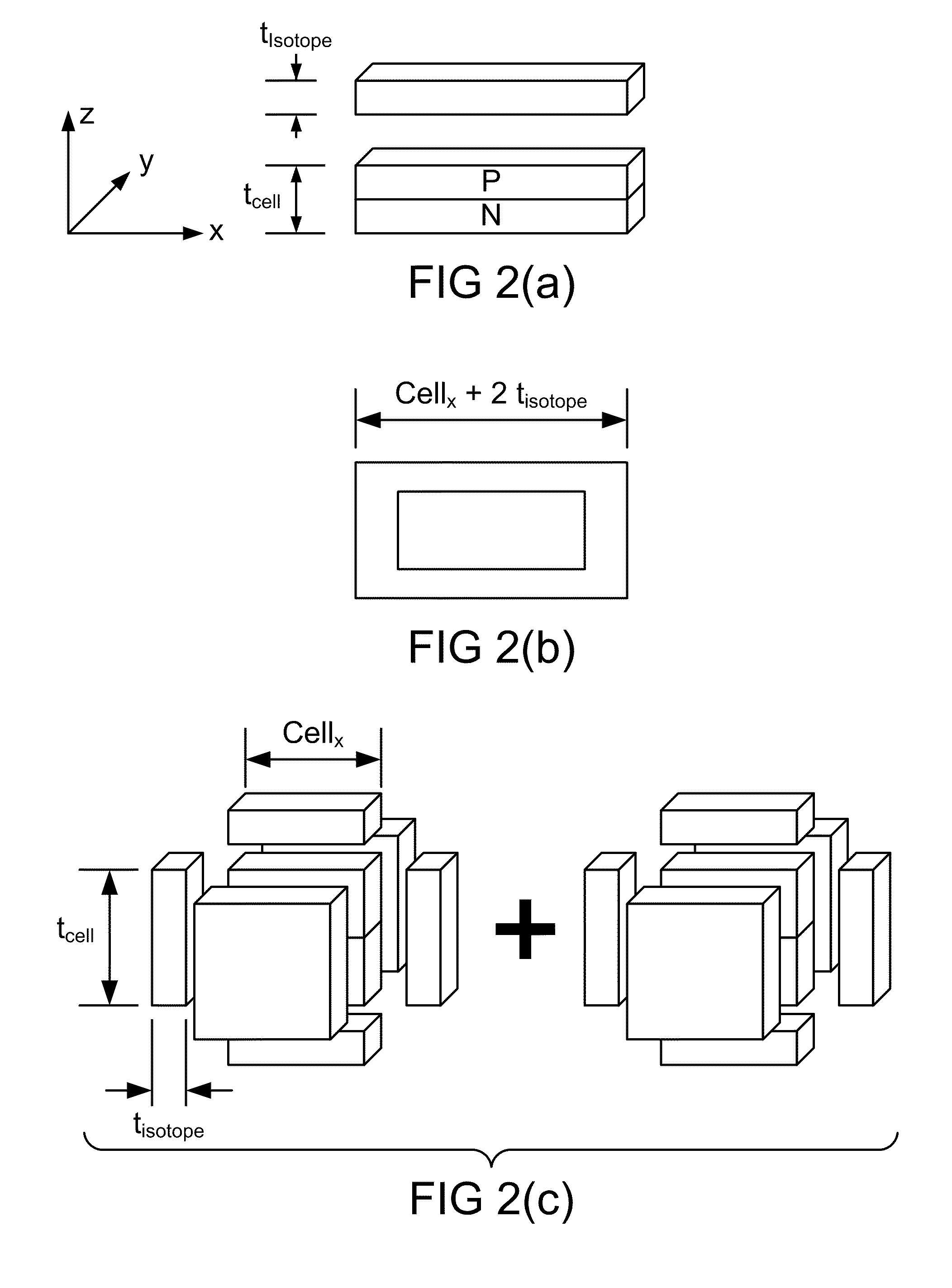Nuclear Batteries
a technology of nuclear batteries and batteries, applied in the field of nuclear batteries, can solve the problems of increasing power density, large device surface area, adding complexity and cost,
- Summary
- Abstract
- Description
- Claims
- Application Information
AI Technical Summary
Benefits of technology
Problems solved by technology
Method used
Image
Examples
Embodiment Construction
[0033]Here are some embodiments of this invention:
[0034]In order to maximize the power output, this planar style betavoltaic device has to be designed to capture as close to all of the beta electrons leaving the surface of the foil as possible. This means that tcell must be at least greater than the diffusion length of the minority carriers (tcell>Ldiff). However, any material thicker than this limit will not actively participate in energy conversion, so while tcell>Ldiff must be true, tcell must be as close as possible to Ldiff so as to maximize volume utilization. Further, the location of the PN junction depth from the surface of the device must be diff in order to collect the maximum number of electron hole-pairs.
TABLE Iβ-emitting radioisotope and their ranges in SiC and self absorption lengthsSelf absorptionSiC absorptionlengthlengthβ-EmittingMean(at mean beta(at mean betaIsotopesenergyenergy)energy)N6317.4 keV0.67 μm 1.84 μmScandium Trititide 5.6 keV0.27 μm 0.25 μmPromethium 6...
PUM
 Login to View More
Login to View More Abstract
Description
Claims
Application Information
 Login to View More
Login to View More - R&D
- Intellectual Property
- Life Sciences
- Materials
- Tech Scout
- Unparalleled Data Quality
- Higher Quality Content
- 60% Fewer Hallucinations
Browse by: Latest US Patents, China's latest patents, Technical Efficacy Thesaurus, Application Domain, Technology Topic, Popular Technical Reports.
© 2025 PatSnap. All rights reserved.Legal|Privacy policy|Modern Slavery Act Transparency Statement|Sitemap|About US| Contact US: help@patsnap.com



